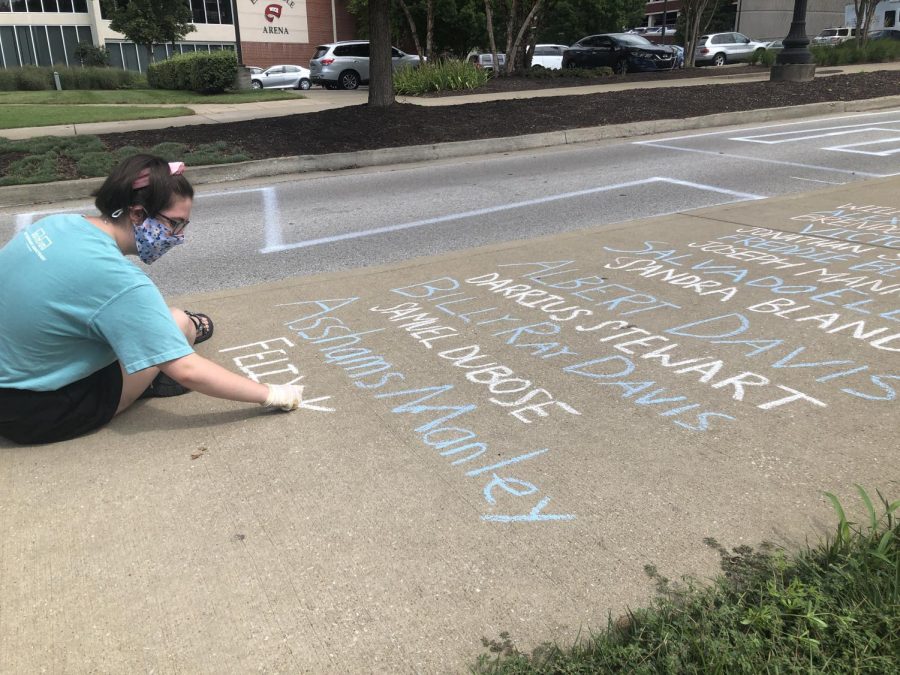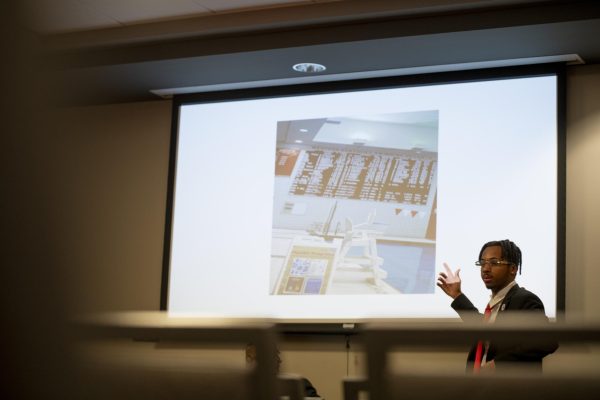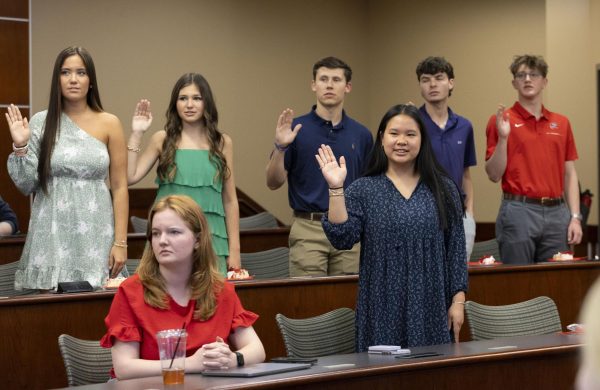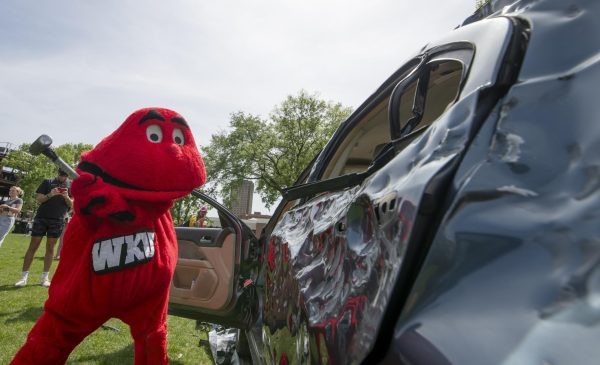Jonesville history comes alive on WKU campus where community once stood
July 28, 2020
What was once a project for a summer class at WKU turned into a bigger look into local history and racial injustice in Bowling Green.
On Tuesday, students organized an event called Commemorating Jonesville to pay a tribute to victims of racial injustice as well as bring awareness of the former black neighborhood, Jonesville, where much of the southern part of WKU’s main campus now stands.
While taking Honors 251 this summer, Hannah Shapiro said it started as a service project for the class. Shapiro and fellow students Laurel Philpott and Amara Dan Turthi started putting it together. They got in touch with local artist Andee Rudloff, who helped facilitate the event and create a mural, WKU’s Mahurin Honors College as well as the university to get permission to block off Avenue of Champions and host the event.
Shapiro said she was inspired by the Black Lives Matter mural at Shake Rag Barbershop. She saw how community members came together to write what they wanted and wanted the same thing for Jonesville.
“I wanted it in a similar way for Jonesville, where anybody could come out and see what was there. I also wanted people to learn more about it,” Shapiro said.
Laurel Philpott said as they began the process of figuring out how to tie it to the community, they found Jonesville. “Having something in our backyard, on our campus, we felt like we had to bring attention to it,” Philpott said.
Jonesville was a successful black community founded by formerly enslaved women and men.
According to Explore Ky History, the thriving neighborhood had everything, including two churches and local businesses. Going into the late 1950s, WKU was looking to expand the campus down the Hill. In the 1960s the state had eventually purchased the land of Jonesville, which was selected as a site for urban renewal.
The area of where Jonesville used to stand is covered by athletic facilities such as Houchens Industries-L.T. Smith football stadium, the E.A. Diddle basketball arena, and the Nick Denes baseball field.
The mural spells out Jonesville and is located in front of Downing Student Union, where people are encouraged to come and draw on the mural. The mural was created by Andee Rudloff, the local artist who is also responsible for the Black Lives Matter mural at Shake Rag Barbershop and the cow mural at the former Brown’s Ice Cream building.
Rudloff said she used “tactical urbanism,” or the reclaiming of space, for the mural. She said that she has seen people walk through and start to ask questions about Jonesville, which is what she wanted.
“People don’t even know that this is Jonesville. That we are standing on Jonesville. I feel like this should be permanent,” Rudloff said. “We’ve got to start acknowledging the bad things about what happened in that community and accepting that.”
Philpott said during the group’s research stage, they found a plaque about Jonesville. “It’s down the road at a place where nobody goes to, that no one reads and it’s in terrible shape. We thought that we need to do better,” she said.
For those who come, there is also a chance to donate money to go toward the African American Museum. Shapiro said that when she talked to the museum and Maxine Ray about the past neighborhood, she saw the amount of older people who weren’t able to come out and be active during the pandemic.
“For us as young people, being able to come out and do this and still be able to contribute to them is a big thing,” Shapiro said, saying she hoped donations could help some of the older people in the community.
People who donated will be put into a raffle for seven copies of the book, “Brown Girl Dreaming” by Jacqueline Woodson, which was donated by the public library.
Another aspect of the event was the ongoing list of names of people who were victims of police brutality and other acts of racial violence. Shapiro said that this was another way to acknowledge the racism locally and the broader topic.
“It’s more than just the police brutality. It’s the unlawful condemning of homes. It’s whenever people walk down the street and get yelled at. We want to bring awareness of the bigger picture right now. We need to be doing something about it,” Shapiro said.
Philpott said that even though we can’t change what happened or make it better for the people affected by it, the group can still honor them. “We can still show them the respect that they deserve,” Philpott said.
A key takeaway that they want people to know is that it’s OK to express themselves and voice what is right. Shapiro said that she was happy that she was able to have people to help her to put it together, but also with herself for being able to step out and bring light to the situation.
“It can be scary, but it’s not because you are going to find a lot of support,” Shapiro said. “I just wanted to show that we are supporting this movement as a community.”


























